Digital Reception
Digital Reception - Problems and Solutions
The two main issues with TV problems are poor reception and interference. In most cases, the cause of problems will be due to poor reception, not interference. A basic thing to check is whether the problem is unique to your set or house, or if the neighbours are having problems too. If the problem is common, it may be interference.If your picture is freezing or blocking (pixellating) and the sound is breaking up, it could be due to one of the following:
- There's a transmitter fault. Check here
- You are in a poor signal coverage area. See below
- There's a problem with your installation. See below
- Your device needs to be re-tuned. Please refer to your manufacturers instructions
- There's a nearby source of interference. (TETRA/LTE) See below
Nearly half of all reception problems are due to deficiencies or faults in the television or digital Freeview™receiver, the aerial lead or the aerial. The following information will help you to check whether the problem you are having is due to one of these causes.
Portable television sets fitted with an inbuilt aerial or a set-top aerial are prone to reception problems. Where these reception problems are experienced, the set should be fitted with an externally mounted aerial. The following advice applies to an external aerial installation.
Initial checks of your equipment:
- Check that your mains plug is wired correctly with tight electrical connections and that it is pushed firmly into the socket.
- Check that you are able to get a good steady picture at the times when the reception problem is not present.
- If any reception problems are apparent ask your neighbours if they have the same or similar type of problem.
- If a new aerial has been installed, it may be wise to adjust the tuning of each channel manually on the TV, or re-scan for digital channels via the appropriate menus on the set top digi box.
- Check that your aerial lead appears to be in good condition, with its plug firmly attached to the lead and making good contact when pushed into the aerial socket on the back of the TV set or digi box.
- Also check that the cable is of the best quality. Copper braid with copper or aluminium foil type cables are generally a minimum requirement.
- Ensure that there are no tight bends or kinks in the coax cable (this can actually completely destroy a single MUX while leaving the rest of them absolutely fine) and also ensure that the cable is not routed close to any electrical cables or items such as thermostats or motors etc.
- Check the wind or wildlife i.e. large birds (perching) have not moved your aerial. A glance at neighbouring aerials will generally show an approximation of the correct direction of the local transmitter.
- Check that you have the right aerial for your area. If you are in doubt, consult your local dealer or aerial installer.
- Hotels, blocks of flats and some housing estates use a communal aerial, which you cannot check yourself. You should contact the landlord or his nominated contractor.
The following are typical examples of reception problems and help in curing such problems
Questions:
- Q. Digital TV Reception Problems
- Q. I have a poor picture (Weak signal) on Digital
- Q. I have poor picture on a Analogue Modulated Channel
- Q. TETRA interference
- Q. LTE interference
- Q. Do It Yourself
- Q. I have tried all of the above suggestions and its still not right what now?
Q. How do I find the correct aerial for my location?
A. There are usually several transmitters in each area that you can choose from. This Freeview™ page may help your selection here
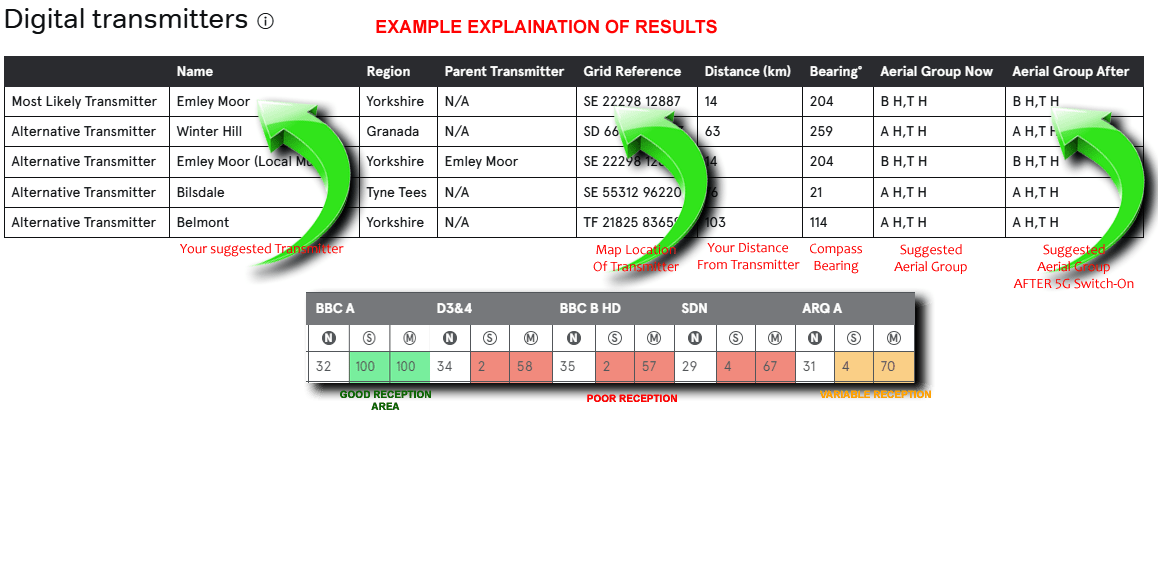
Q. How do I order your products?
A. Products can be ordered by one of the following methods:-
- If you are an end user then either contact your local professional installer or select the buy icon on the product pages.
- If you are trade installer and wish to find details of your local wholesaler, please fill in the appropriate details here.
Q. Digital TV Reception Problems
Unlike the old analogue reception problems where the various patterns tell us the problem, digital reception generally has the same screen output for all reception problems be it weak signal or radio interference. Usually, cures for the old analogue reception issues will also work for digital reception problems.
Poor Digital Reception (notice break-up at bottom of the picture)
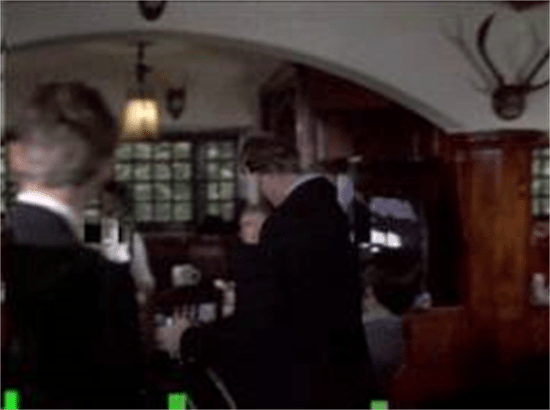
Very Poor Digital Reception (this could be due to weak signal or interference)
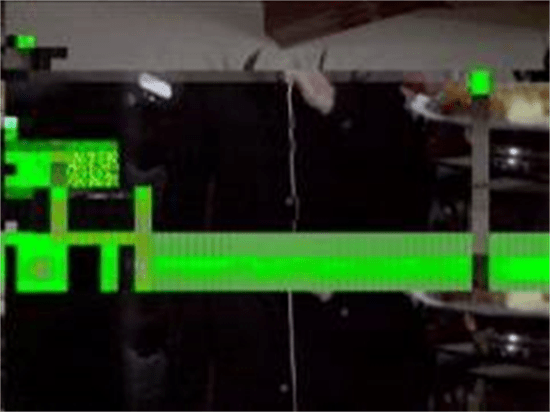
Essentials for Good Quality Digital Reception
- Use a good quality bench-marked aerial (follow the aerial manufacturer's cable route recommendations) or, as a minimum, an aerial with an angled reflector with fitted Balun in the dipole.
- Use good quality double-screened coaxial cable (preferably bench-marked types) and good quality connectors.
- Avoid splitting the signal, use distribution amps if reception in more than one room is required.
- Use masthead type amplification, avoid set back type amplification as the main method of distribution (the signal will have degraded by the time it reaches the setback if it is not pre-amplified).
- Take care when running the cables, avoid tight bends (kinks) and do not run the cable alongside any other cable, especially mains/electrical cables.
- Keep cable connections and lengths to an absolute minimum; if possible take the cable through the wall and directly into the receiver rather than connecting via a wall plate. (If wall plates are to be used, use screened versions).
A. What you can do?
If the picture is breaking up constantly or no channels are found, the signal is too weak and will need attention, try the following:- Ensure that the aerial is bench-marked or, at minimum, is a high gain type with a balun fitted.
- Check the aerial polarity (horizontal or vertical).
- Ensure that the aerial is aligned to the transmitter.
- Ensure that no obstructions are directly in front of the aerial, i.e. trees, chimney stack (or water tanks in loft installations).
- If necessary increase the installed height of the aerial to avoid obstructions.
- If loft mounting is unsuccessful, try installing the aerial outside as high as possible.
- Check all cable connections and ensure that the cable and all interconnecting leads are good quality screened or even double-screened type.
- Ensure that the aerial is of the correct group type i.e. A, B, CD or WB. (For example, if a group A aerial is installed, digital channels within group CD may break up or may not be received at all).
- If after everything has been checked, the signal is still weak, try a higher gain aerial and/or a pre-amplifier.
- If the picture breaks up when an electrical switch is made, i.e. thermostat or light switch, the problem could be the shielding effectiveness of the coax cable.
- If the cable is old, replace it with good quality double-screened cable (preferably bench-marked versions) on all cable routes.
- Ensure that the cable is not running alongside other cables, especially electrical cables.
- If the picture breaks up intermittently with no electrical switching taking place, the cause could be radio interference i.e. Tetra or PMR (Private Mobile Radio)
- Again, use good quality double-screened cable (preferably bench-marked versions), including interconnecting cables, i.e. fly leads and SCART leads.
- Check all cable connections.
- Try re-positioning the aerial to a position that could be shielded from potential interference but will still be able to receive the TV signal.
- Install a Tetra filter or an amplifier with inbuilt Tetra filtering.
- If after attempting all relevant cures the problem still exists, the problem could be the TV, especially if it is an old model (older models may not have the screening effectiveness as that which is found on modern units)
The above recommendations should resolve most digital reception problems.
Other factors causing Interference
Q. TETRA (Terrestrial Trunked Radio or Trans European Trunked Radio)-interference
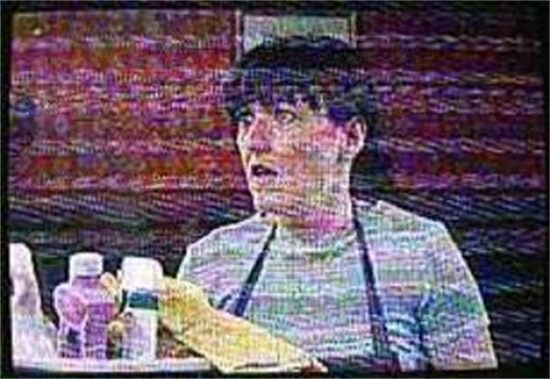
This image shows how a strong TETRA transmission could affect your TV reception and although Digital signals are very resilient to this type of interference, if strong enough, TETRA interference on Digital pictures would look like the mosaic effect often found with other types of interference.
Tetra is used by government agencies, emergency services like the police forces, fire departments, ambulance for public safety networks, rail transport staff for train radios, transport services and the military.
A Tetra mast within 3Km of your location can cause interference due to the signal been focused in a certain direction and the signal being digital. See our page on TETRA here.
What you can do?
- Many aerials do not have good out of band rejection performance, so a change of aerial to one that does may be worthwhile.
- Re-positioning the aerial would also be a good idea, even if it were only the height and azimuth that can be adjusted.
- Install a simple passive TETRA filter If also using an amplifier then place the filter BEFORE the amplifier or better still install one with TETRA filtering included like our own range of Amplifiers
Refer to the FAQ on TETRA Interference
Q. LTE Interference (4G/5G).
This image shows what 4G LTE interference on DTT Digital pictures would look like.
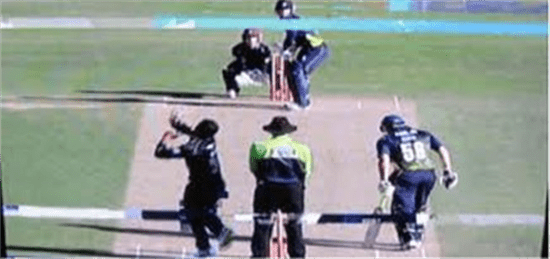 The mosaic effect often found with other types of interference.
The mosaic effect often found with other types of interference.
LTE 5G Interference
During 2020 mobile network providers will be launching a new LTE 5G service for high speed mobile internet. Thia will involve removing the DTT service from the top part of the current band. Please see below chart for an explanation of whats happening. You will need to re-tune your TV during this transition period and may need a special LTE 5G filter to prevent interference from the new service. These will be available from us shortly. Please see our LTE page for further details.
What you can do?
|
470
|
575
|
|
606
|
677
|
683
|
749
|
779-862
|
Freqency in MHz
|
|
DTT interleaved spectrum
Also used by PMSE and Whitespace |
600MHz
Band |
PMSE
|
DTT interleaved spectrum
Also used by PMSE and Whitespace |
Mobile broadband
(800MHz award) |
Allocation
|
|||
|
21
|
31
|
38
|
48
|
49
|
60
|
69
|
Channel No.
|
|
|
New DTT band
|
Mobile broadband
(700Mhz) |
Mobile broadband
(800MHz) |
Allocation after clearance
|
|||||
Q. Do It Yourself
In areas of weak signals the use of Double Screened cables may be beneficial, as this will help to reduce signal loss and degradation of picture quality.
- Popping and Cracking on sound can be caused by lack of signal. Changing to a a higher gain aerial such as a Super Range 18 element or a high gain multibeam aerial such as one from our DMX or JBX range may resolve this problem.
- Mounting aerials indoors in your loft will reduce the available signal. Always try to mount an aerial outdoors for the best results.
- Trees can cause a signal to be reduced when the leaves return in spring. They have a slow, gradual weakening effect to the picture. The picture may "Come and Go" as the tree sways in the wind. An aerial should be positioned so as to look around or over any trees.
- If fitting more than one aerial to a mast always keep them as far apart as possible. Aerials mounted too close together may interfere with each other.
- For optimum results it is advisable to fit an aerial which is designed to work specifically on the appropriate group for your area. Transmitters are normally polarised horizontally for a main transmitter, or vertically for a relay transmitter.
UK UHF TV Channel Groups
| Band |
Pre LTE:800 Channels |
Pre LTE:800 Frequency (MHz) |
Post LTE:800 Channels |
Post LTE:800
Frequency (MHz |
Colour Code |
|
A
|
21-37
|
470-606
|
21-37
|
470-606
|
RED
|
|
B
|
35-53
|
582-734
|
35-53
|
582-734
|
YELLOW
|
|
C/D
|
48-68
|
686-854
|
48-60
|
686-790
|
GREEN
|
|
E
|
35-68
|
582-854
|
35-60
|
582-790
|
BROWN
|
|
K
|
21-48
|
470-694
|
21-48
|
470-694
|
GREY
|
|
W/B
|
21-68
|
470-854
|
-
|
-
|
BLACK
|
|
T
|
-
|
-
|
21-60
|
470-790
|
WHITE
|
Q. I have tried all of the above suggestions and its still not right what now?
In most cases problems can be cured with slight adjustments to the installation. However it is possible to get carried away with all the little tweaks here and there. If it is proving difficult to achieve the best reception possible and everything has been tried, it may be worthwhile to call out an experienced engineer, it is recommended that a CAI (Confederation Of Aerial Industries) registered engineer be used. It may be that the problems you are having are common in the area and the engineer may know a common cure.
It is worth making solid notes of times and dates of the interference, as a pattern may be seen after a while.
It can be very difficult to eliminate the source of the interference and be aware it may not always be a local as you may think. We have heard examples of Television interference being caused by a Jacuzzi pump several house down from the television property. Keeping logs can help show times that it's happening, for example showing that a heating pump that comes on at a fixed time of day is causing issues.
Other unlikely problems in the past have been DECT telephones at the side of the TV, CB radio, LED lighting or switch mode power supplies in cheaper distribution amplifiers and even mobile phone power supplies (wall-warts)
Wide band interference can be sourced by using your FM radio, tune in between the stations and listen for unusual noise, move around the house and see if it gets stronger.
Also in most cases, digital reception problems can be cured by the same methods adopted for analogue reception problems, key components for a successful digital installation are a good quality high gain aerial (preferably a CAI benchmarked⁄certified model), good quality double screened cable and good quality screened outlet plates (if used). In addition to this all cable connections should be kept to a minimum and be tight and correct.
More advice on reception problems can be had from the website Radio and Television Investigations services.








 Quick Add
Quick Add